If you’re craving a cake that’s rich, buttery, and melts in your mouth, whipping cream pound cake should be at the top of your baking list. Unlike traditional pound cakes, this version gets its exceptional moistness and velvety crumb from heavy whipping cream—an ingredient that transforms a simple dessert into a luxurious treat. With roots in old-fashioned Southern kitchens and a reputation for being both easy to make and irresistibly delicious, it’s no wonder this cake continues to be a timeless favorite.
In this guide, we’ll walk you through everything you need to know about making the perfect whipping cream pound cake—from selecting the right ingredients and mixing techniques to baking, storing, and serving. You’ll also learn about creative variations, expert tips from seasoned bakers, and answers to common questions. Whether you’re a first-time baker or a seasoned pro, this article will help you master the art of the ultimate whipping cream pound cake.
Table of Contents
Understanding Whipping Cream Pound Cake
What Makes Whipping Cream Pound Cake Unique?

Whipping cream pound cake stands out from other cakes because of one luxurious ingredient: heavy whipping cream. Unlike traditional pound cakes that rely solely on butter, this version blends the richness of butter with the silkiness of cream. The result is a cake with a moist, tight crumb and velvety texture that stays tender for days.
The heavy cream acts not only as a fat but also as a leavening partner with eggs, giving the cake a light lift without sacrificing the dense, buttery bite that makes pound cakes so irresistible. The fat content in whipping cream—ranging from 36% to 40%—provides superior moisture retention and flavor, making every slice rich without feeling greasy.
You’ll often see this cake compared with other moist and indulgent varieties like the tres leches pound cake, but whipping cream keeps things simple without sacrificing decadence.
A Brief History of the Pound Cake and Its Creamy Cousin
The pound cake has humble beginnings dating back to 18th-century Europe. Originally, it was called a “pound” cake because of its straightforward recipe: a pound each of flour, butter, sugar, and eggs. That simplicity made it easy to remember and replicate in any home kitchen.
Over time, bakers began experimenting with the recipe, adjusting proportions and introducing new ingredients to enhance flavor and texture. One of those innovations was heavy whipping cream—a Southern twist that quickly became a beloved staple in many households.
This Southern-style variation marries tradition with indulgence. It reflects a shift in baking culture: one that values richness and comfort. Recipes like the old-fashioned hummingbird cake and pineapple delight cake echo the same sentiment—baking that speaks to nostalgia and flavor-packed celebration.
Whipping cream pound cake has become a go-to dessert for holidays, Sunday suppers, and celebrations, offering a level of decadence that’s both nostalgic and unforgettable.
Key Ingredients in Whipping Cream Pound Cake
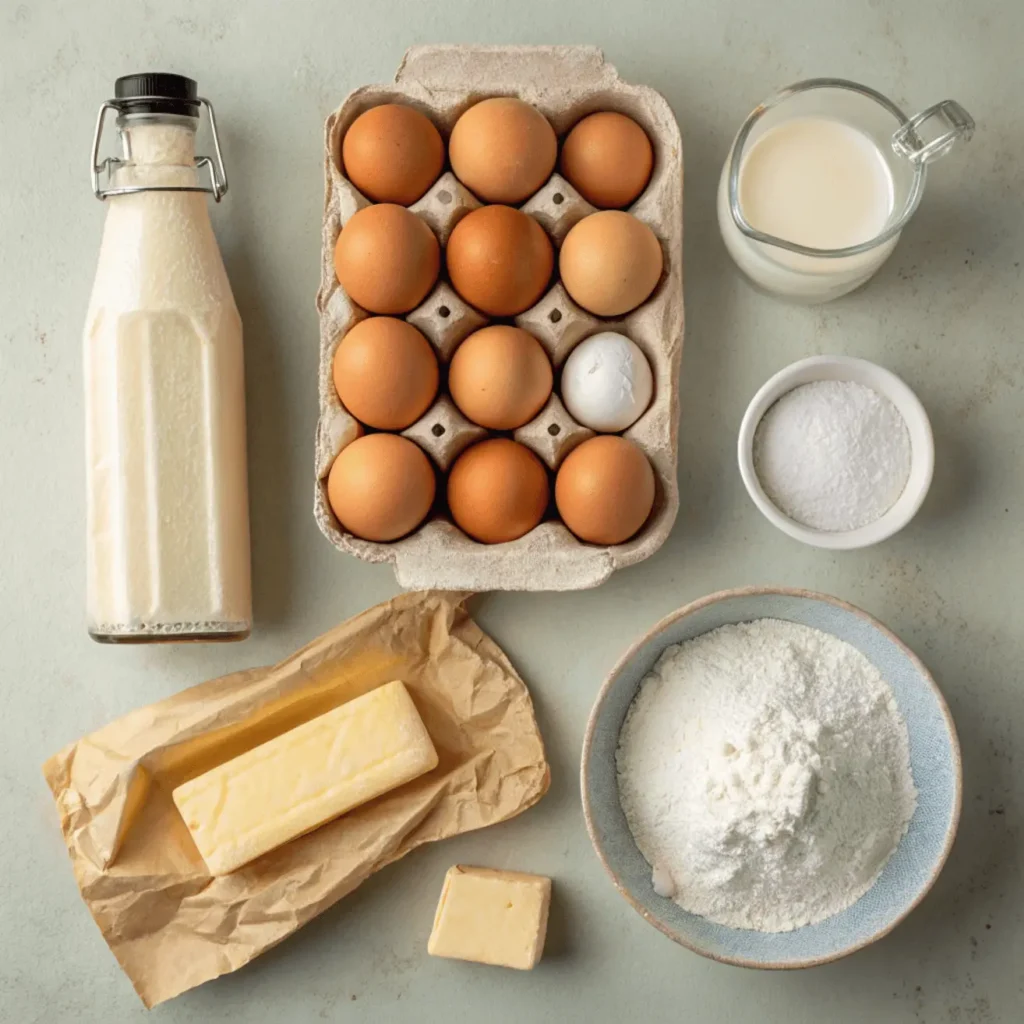
Why Heavy Whipping Cream Is a Game-Changer
Heavy whipping cream plays a vital role in elevating a traditional pound cake into a rich, velvety masterpiece. Its high fat content delivers unmatched moisture and flavor, helping the cake stay soft and indulgent for days.
Key Benefits of Heavy Whipping Cream:
- Provides a dense but tender crumb
- Acts as both a moistener and partial leavening agent
- Infuses buttery richness throughout the batter
- Creates a naturally flavorful cake without glaze or frosting
You can experiment with subtle flavors by replacing a small portion of the cream (no more than ¼ cup) with flavored dairy-based creamers. These options, such as vanilla caramel or hazelnut, pair well with the classic taste without overwhelming it.
Below is a helpful breakdown of different liquids often compared in baking:
| Liquid Type | Fat Content | Recommended for Pound Cake? |
|---|---|---|
| Heavy Whipping Cream | 36%–40% | Yes |
| Half-and-Half | 10%–12% | No — too low in fat |
| Whole Milk | 3.5% | Not ideal |
| Flavored Coffee Creamer | Varies (10–20%) | Use sparingly, not a full swap |
For cakes that also use rich dairy-based elements, check out this king cake recipe for another Southern dessert experience.
Choosing the Right Butter, Eggs, and Cake Flour
Each core ingredient in a whipping cream pound cake contributes to its dense structure and moist texture. Selecting the right quality and quantity is crucial.
Butter: Unsalted and Rich
- Always opt for unsalted butter to control sodium levels.
- High-fat European butter adds deeper flavor.
- Room temperature butter blends evenly with sugar, essential for creaming.
Eggs: Structure and Volume
- Use large eggs, preferably at room temperature.
- Eggs emulsify the fat and flour, helping the cake hold its shape.
- Cold eggs may cause curdling or uneven mixing.
Cake Flour: Soft Crumb Essential
Unlike all-purpose flour, cake flour contains less protein, which leads to less gluten formation and a more delicate texture.
| Flour Type | Protein % | Texture Result |
|---|---|---|
| Cake Flour | 7–8% | Soft, tender, light |
| All-Purpose Flour | 10–12% | Dense, chewy, less delicate |
DIY Cake Flour Substitute:
- 1 cup all-purpose flour minus 2 tablespoons
- Add 2 tablespoons of cornstarch
- Sift together twice for best results
This method helps improve texture, but it still won’t match the softness of true cake flour. Need inspiration for soft, creative desserts? Don’t miss this cookie cakes collection—perfect for parties or quick family treats.
The Perfect Recipe for Whipping Cream Pound Cake
Step-by-Step Instructions with Measurements
Creating the perfect whipping cream pound cake starts with precision. Every ingredient plays a role, and following each step carefully ensures you get the signature dense yet tender crumb.
Here’s the classic version that yields a golden, moist cake with a smooth texture and buttery flavor.
Ingredients List
| Ingredient | Measurement |
|---|---|
| Unsalted butter | 1 cup (2 sticks) |
| Granulated sugar | 3 cups |
| Large eggs | 6 |
| Cake flour (sifted) | 3 cups |
| Heavy whipping cream | 1 cup |
| Pure vanilla extract | 1 tablespoon |
| Salt | ½ teaspoon |
Tip: All ingredients should be at room temperature before starting. This ensures a smooth, even batter.
Mixing Instructions
- Preheat your oven to 325°F (163°C). Grease and flour a 10-inch tube pan or bundt pan thoroughly.
- In a large mixing bowl, cream the butter and sugar together until light and fluffy (about 5–7 minutes).
- Add the eggs one at a time, beating well after each addition. Scrape down the sides of the bowl as needed.
- Sift the cake flour with salt. Alternate adding the dry flour mixture and heavy cream to the batter:
- Start with ⅓ of the flour, mix
- Add ½ of the cream, mix
- Repeat and finish with flour
- Mix until just combined—do not overbeat.
- Stir in the vanilla extract gently.
- Pour batter into the prepared pan. Tap the pan lightly on the counter to remove air bubbles.
Want a more festive flavor twist? Try this gender reveal cake technique for creative color layers inside your pound cake.
Mixing Techniques for a Moist and Fluffy Texture
Achieving the right structure in your whipping cream pound cake depends as much on technique as it does on ingredients.
Key Tips for Texture Success:
- Cream butter and sugar thoroughly. This is where most of the air is incorporated for lift.
- Don’t rush the egg additions. Adding them slowly helps emulsify the batter and prevents separation.
- Alternate flour and cream additions. This keeps the batter smooth and prevents overmixing.
| Step | Purpose |
|---|---|
| Creaming butter/sugar | Incorporates air, base for lightness |
| Alternating flour/cream | Controls consistency, prevents lumping |
| Folding in vanilla | Preserves air and avoids overworking |
For cakes with a similar moist crumb, check out our take on tres leches pound cake.
Baking and Cooling Tips for the Best Results
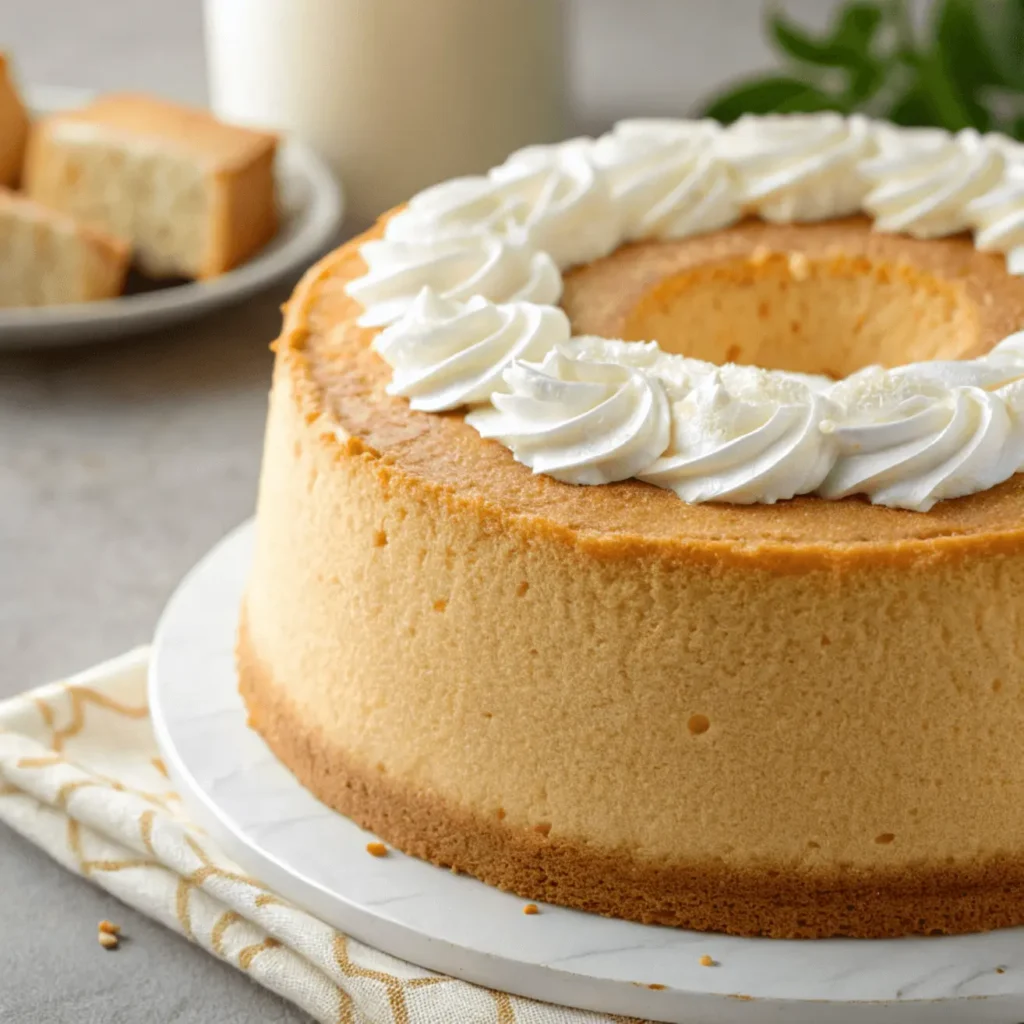
Oven Temperature and Baking Time Guidelines
Once your batter is prepped, baking it correctly is the key to a perfectly golden, moist interior without a dry crumb or raw center. Whipping cream pound cake takes time in the oven due to its density and richness.
Baking Guidelines
| Step | Details |
|---|---|
| Preheat oven | 325°F (163°C) |
| Pan preparation | Grease and flour a 10-inch tube or Bundt pan |
| Baking duration | 1 hour 15 minutes to 1 hour 30 minutes |
| Doneness check | Use a wooden skewer; it should come out clean |
| Rack position | Center of oven |
Tips for Even Baking:
- Always use a light-colored pan. Dark pans brown too quickly on the outside before the inside cooks through.
- Don’t open the oven door during the first 60 minutes—sudden drops in temperature can cause sinking.
- Rotate the pan halfway through if your oven has hot spots.
Cooling, Releasing, and Storing Without Breaking
Letting your whipping cream pound cake cool properly is just as important as the bake itself. If you rush this step, you risk tearing the cake or creating a soggy bottom.
Cooling Instructions:
- Allow the cake to cool in the pan for 15–20 minutes on a wire rack. This helps the cake firm up slightly so it doesn’t break apart during release.
- Run a thin knife gently around the edge of the pan to loosen.
- Invert the cake onto a cooling rack and let it cool completely before slicing or glazing.
Storage Methods:
| Storage Option | How To | Shelf Life |
|---|---|---|
| Room Temperature | Wrap tightly in plastic wrap or foil | 3–4 days |
| Refrigerator | Wrap and store in airtight container | Up to 7 days |
| Freezer | Double wrap in plastic and foil, freeze in slices | Up to 3 months |
Note: Whipping cream pound cake is dense but sensitive. If freezing, thaw at room temperature before serving to maintain its original texture.
For ideas on how to enhance presentation or flavor, this pineapple delight cake offers inspiration for glazing, topping, or pairing techniques that complement rich cake bases.
Variations and Flavor Twists
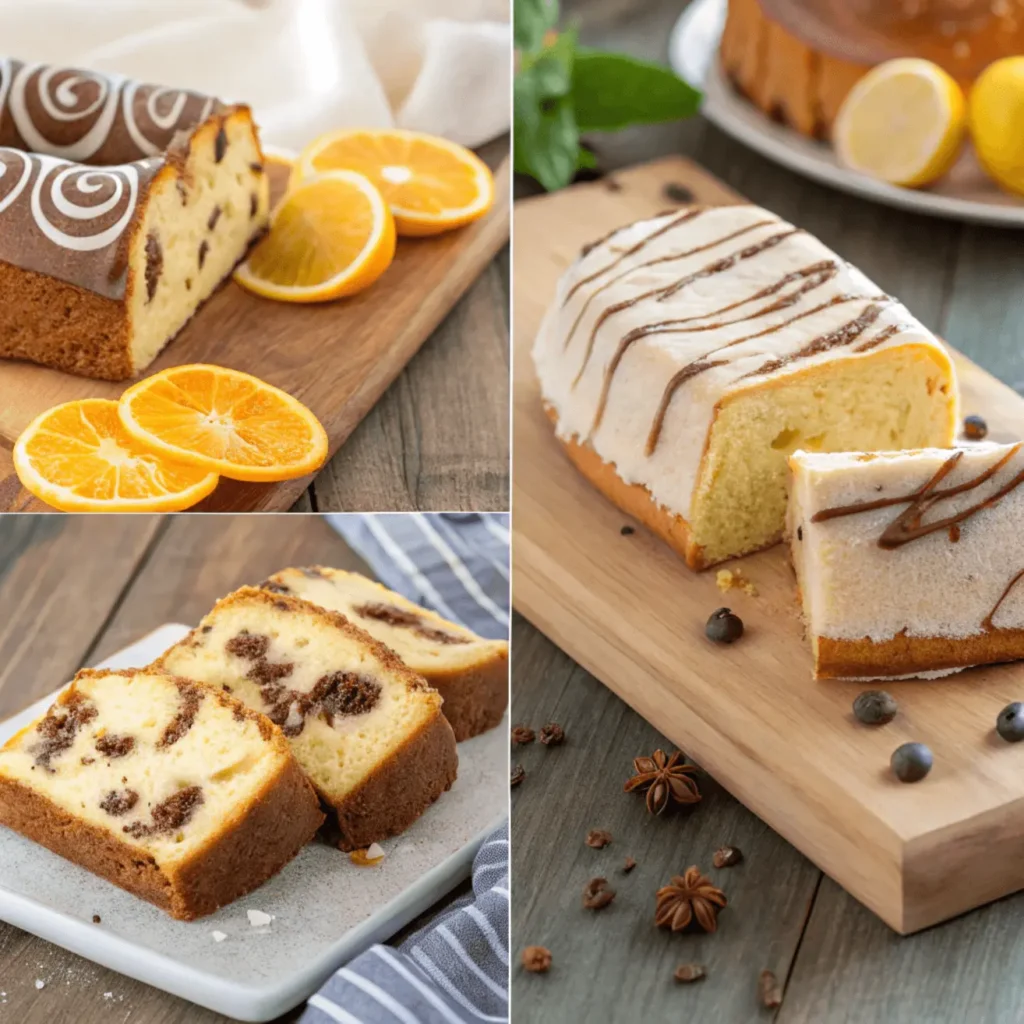
Citrus, Chocolate and Nut Variations
Whipping cream pound cake is incredibly versatile, making it the perfect base for flavor customization. Whether you’re looking to add brightness, richness, or texture, these variations can elevate your classic cake into something new and unforgettable.
Popular Flavor Additions
- Lemon or Orange Zest: Add 1 tablespoon of fresh zest to the batter for a citrusy kick.
- Almond Extract: Substitute half of the vanilla extract with almond extract for a nutty aroma.
- Chopped Pecans or Walnuts: Fold in ¾ cup for a crunchy bite throughout the cake.
- Mini Chocolate Chips: Add 1 cup of mini chips to the batter for bursts of cocoa richness.
Tip: Lightly flour any add-ins before mixing them in. This prevents sinking during baking.
| Add-In | Measurement | Effect |
|---|---|---|
| Lemon zest | 1 tbsp | Fresh, tangy citrus flavor |
| Almond extract | ½ tbsp | Nutty, aromatic depth |
| Chopped pecans | ¾ cup | Texture and warm flavor |
| Mini chocolate chips | 1 cup | Sweet contrast and richness |
Want to explore another moist Southern favorite? Check out the old-fashioned hummingbird cake packed with banana, pineapple, and nuts.
Using Flavored Coffee Creamers or Extracts
Coffee creamers aren’t just for your morning brew—they can be a secret ingredient for adding flavor and moisture to cakes. Many bakers are using flavored creamers to put a modern twist on traditional pound cake recipes.
How to Use Creamers:
- Replace ¼ cup of the heavy whipping cream with a flavored liquid creamer.
- Popular flavors include French vanilla, hazelnut, caramel macchiato, and toasted almond.
- Avoid non-dairy creamers that contain high water content as they may affect texture.
Extract Pairing Ideas:
- Maple extract + brown sugar = autumn-inspired warmth
- Coconut extract + cream of coconut = tropical twist
- Rum extract + nutmeg = holiday-ready variation
Use these additions sparingly. A little flavor goes a long way, and overpowering the delicate creaminess of the base can unbalance the cake.
Want to test out fun cake alternatives? Explore these cookie cake recipes for ideas that blend traditional and trendy dessert formats.
Serving Suggestions for Whipping Cream Pound Cake
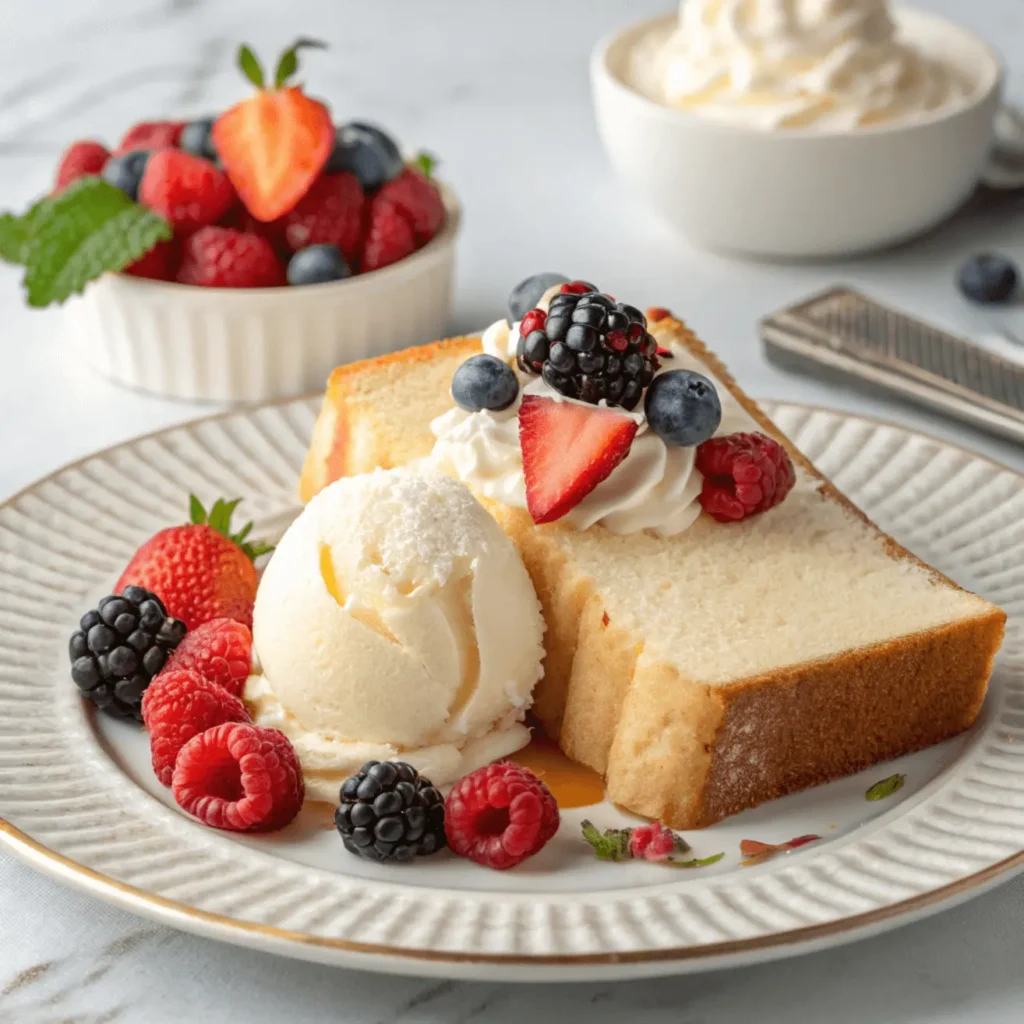
Pairing with Fruits, Whipped Cream and Ice Cream
The beauty of whipping cream pound cake is that it shines on its own but also pairs effortlessly with toppings. Whether you’re serving a slice for brunch or dessert, here are presentation ideas that highlight its buttery richness without overpowering it.
Classic Toppings to Elevate Each Slice:
- Fresh berries (strawberries, blueberries, raspberries) add brightness and balance the sweetness.
- Homemade whipped cream provides a light, airy contrast to the dense cake.
- Vanilla or butter pecan ice cream creates a decadent dessert plate.
- Citrus glaze made with lemon juice and powdered sugar adds a tangy finish.
- Powdered sugar dusting is simple, elegant, and enhances the cake’s golden top.
| Topping Option | Flavor Profile | Best Occasion |
|---|---|---|
| Fresh Berries | Tart and refreshing | Summer or brunch |
| Whipped Cream | Light and airy | Casual gatherings |
| Vanilla Ice Cream | Rich and smooth | Dinner parties or holidays |
| Citrus Glaze | Tangy and sweet | Spring and Easter bakes |
| Powdered Sugar | Subtle sweetness | Everyday serving |
For another idea with fruit-forward sweetness, explore our lemon blueberry icebox cake for inspiration.
How to Present It for Holidays or Gatherings
Whipping cream pound cake isn’t just a dessert—it can be the centerpiece of your table. With a few simple styling tips, you can transform this humble loaf or bundt into an elegant showstopper.
Presentation Tips:
- Bundt pan bakes are perfect for creating defined, decorative edges.
- Add seasonal garnishes like sugared cranberries in winter or edible flowers in spring.
- Serve slices on vintage cake stands or wooden platters for rustic charm.
- Drizzle with a flavored glaze just before serving to add shine and taste.
- For holiday gatherings, create a dessert platter with sliced cake, mini fruit bowls, whipped cream, and toppings on the side.
Want a vibrant and celebratory cake option for events? Try this gender reveal cake for festive presentation ideas.
Troubleshooting Common Issues
Why Your Pound Cake Might Be Dry or Dense
Even experienced bakers can run into issues with whipping cream pound cake. If your cake turns out too dry, too dense, or lacks flavor, the problem likely lies in technique or ingredient ratios. Here’s how to identify and correct the most common issues.
Common Mistakes and How to Fix Them
| Problem | Likely Cause | Solution |
|---|---|---|
| Dry texture | Overbaking or not enough fat | Reduce baking time slightly; ensure full-fat cream |
| Dense or gummy interior | Overmixing or using cold ingredients | Use room temp ingredients; mix just until combined |
| Cake didn’t rise properly | Old leavening or poor creaming method | Cream butter/sugar for 5–7 minutes; use fresh ingredients |
| Crumbly or falling apart | Too much flour or not enough binding from eggs | Use exact flour measurement; don’t skip eggs |
| Soggy or undercooked center | Oven temperature too low or cake removed too early | Use oven thermometer; bake until a skewer comes out clean |
TIP: Always measure flour using the spoon-and-level method—don’t scoop directly with your measuring cup or you’ll pack in too much.
Fixing Undercooked Centers and Sunken Tops
One of the most frustrating issues is slicing into a beautifully golden cake only to find the center raw or the top sunken. Here’s what might be happening—and how to prevent it next time.
Undercooked Center
- Possible cause: Oven temperature was inaccurate, or the batter was too thick.
- Fix: Use an oven thermometer and bake the cake longer at 325°F. Tent the top with foil to prevent overbrowning while the inside finishes baking.
Sunken Top
- Possible cause: The oven door was opened too early, or the batter was overmixed.
- Fix: Resist the urge to check on the cake during the first 60 minutes. Mix batter just until the flour disappears—overmixing weakens structure.
Still facing texture issues? Sometimes pan type plays a role too. Choose light-colored metal pans and avoid glass or dark-coated pans, which retain heat unevenly.
Expert Tips from Home Bakers and Professionals
Advice from Top Food Bloggers and Chefs
Over time, many culinary experts and experienced home bakers have refined their approach to whipping cream pound cake. Here’s what they’ve learned through practice and perfection.
Chef-Tested Advice:
- Cream Longer Than You Think: Top bakers like those at Southern Living and food blogs such as “Call Me PMc” recommend creaming butter and sugar for a full 7 minutes to trap as much air as possible—this helps lighten the dense structure.
- Use Cake Flour Only: All-purpose flour makes the cake heavier and less refined. Professionals prefer Swans Down or similar extra-fine cake flours for that signature tight crumb.
- Weigh Your Ingredients: Precision is key. Using a digital scale instead of measuring cups ensures consistent moisture and texture every time.
Common Tools of the Trade:
- Stand mixer with paddle attachment for even creaming
- Silicone spatula for gentle folding
- Tube or bundt pan for uniform heat distribution
- Oven thermometer to maintain consistent baking temp
Traditional Family Recipes and Southern Secrets
Many Southern families have passed down their whipping cream pound cake recipes for generations. These often include personal touches or specific ingredients tied to heritage and local traditions.
Southern Pound Cake Secrets:
- Use 3 cups sugar, 6 eggs, and 3 sticks butter. This is the foundational ratio found in most old-school recipes.
- Some families swear by baking low and slow—at 300°F instead of 325°F—for a finer, more delicate crumb.
- A teaspoon of almond extract added to vanilla gives the cake a nostalgic flavor with more complexity.
- To prevent over-browning, some Southern bakers line the outside of the pan with wet cake strips for even heating.
| Southern Family Tip | Why It Works |
|---|---|
| Room-temp ingredients only | Ensures better mixing and texture |
| Tube pan with removable base | Easier release and less risk of tearing cake |
| Bake longer at lower temp | Prevents dry edges and underbaked centers |
Bonus Tip: Let the cake “rest” for 24 hours, wrapped tightly in foil. It becomes even more moist and flavorful the next day.
FAQ Section: Whipping Cream Pound Cake
Can you put heavy cream in a pound cake?
Yes, and it’s one of the best upgrades you can make. Heavy cream adds richness, fat, and moisture, which leads to a denser, smoother texture. In fact, replacing milk or other liquids with heavy cream in a pound cake isn’t just acceptable—it’s preferred when you’re aiming for a more indulgent and tender crumb.
What does heavy whipping cream do to a cake?
Heavy whipping cream enhances both texture and flavor. It contributes fat for moisture, helps the batter retain air for lift, and improves the cake’s overall mouthfeel. It also adds a natural sweetness and luxurious finish that balances out the structure of the cake, especially in recipes without frostings or glazes.
What happens if you use heavy whipping cream instead of milk in cake?
Using heavy whipping cream instead of milk results in a richer and more tender cake. Because cream has more fat (around 36–40%) than milk (3.5%), it increases the moisture content and gives the cake a more luscious texture. However, it also makes the cake slightly denser, which is ideal for pound cakes but not always for lighter sponge-style cakes.
What makes a pound cake super moist?
A truly moist pound cake comes down to a few essential factors. The use of heavy whipping cream plays a major role, as it provides both moisture and structure. Another critical element is the mixing process; creaming the butter and sugar thoroughly allows air to incorporate into the batter, contributing to a finer crumb. Additionally, precise measurement of ingredients, proper baking temperature, and allowing the cake to rest after baking all contribute to locking in moisture. Letting the cake sit wrapped for 24 hours before slicing often results in an even more tender and flavorful texture.
Conclusion
Whipping cream pound cake is more than just a dessert—it’s a rich, nostalgic centerpiece that brings comfort and indulgence to any table. Its beauty lies in its simplicity, yet the addition of heavy whipping cream transforms it into something truly special. With the right ingredients, careful mixing techniques, and a little patience, you can create a cake that’s dense yet tender, buttery yet light, and delicious enough to stand on its own or dressed up for any occasion.
We’ve explored everything from the foundational elements of this beloved Southern classic to expert tips, common troubleshooting advice, and flavorful variations. Whether you’re serving it with fruit and whipped cream, experimenting with citrus zest, or wrapping it as a holiday gift, whipping cream pound cake never disappoints.
If you’re looking for more rich, Southern-inspired recipes, don’t miss our guide on how to make old-fashioned hummingbird cake or explore this refreshing lemon blueberry icebox cake. These crowd-pleasers pair beautifully with the same baking techniques and serve as perfect complements to your pound cake repertoire.
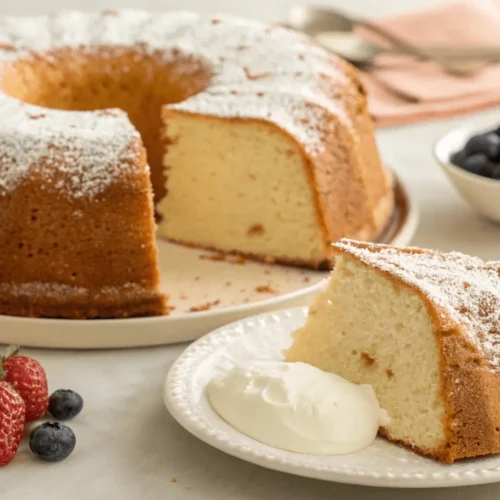
Whipping Cream Pound Cake
Ingredients
- 1 cup unsalted butter (2 sticks)
- 3 cups granulated sugar
- 6 large eggs
- 3 cups cake flour sifted
- 1 cup heavy whipping cream
- 1 tbsp pure vanilla extract
- ½ tsp salt
Instructions
- Preheat your oven to 325°F (163°C). Grease and flour a 10-inch tube pan or bundt pan thoroughly.
- In a large bowl, cream the butter and sugar together using a stand or hand mixer for 5–7 minutes, until the mixture is light and fluffy
- Add the eggs one at a time, beating well after each addition. Scrape down the sides of the bowl to ensure even mixing.
- In a separate bowl, whisk together the cake flour and salt.
- Add the dry ingredients to the butter mixture alternately with the heavy cream: start with ⅓ of the flour, then ½ of the cream, repeating until all is incorporated.
- Stir in the vanilla extract just until combined.
- Pour the batter into the prepared pan. Smooth the top and gently tap the pan on the counter to release any air bubbles
- Bake for 75 to 90 minutes, or until a wooden skewer inserted in the center comes out clean.
- Let the cake cool in the pan for 15–20 minutes, then carefully invert it onto a wire rack to cool completely before slicing
Notes
- Serve slices with fresh berries, homemade whipped cream, or a light lemon glaze. It’s perfect as-is or topped with a scoop of vanilla ice cream for a richer dessert.
- Wrap tightly in plastic or foil and store at room temperature for up to 4 days. For longer storage, refrigerate for up to 1 week or freeze for up to 3 months.
- For added flavor, try replacing ¼ cup of the heavy cream with a flavored dairy creamer such as French vanilla or hazelnut. To boost richness, use European-style butter and let the cake rest overnight before slicing.

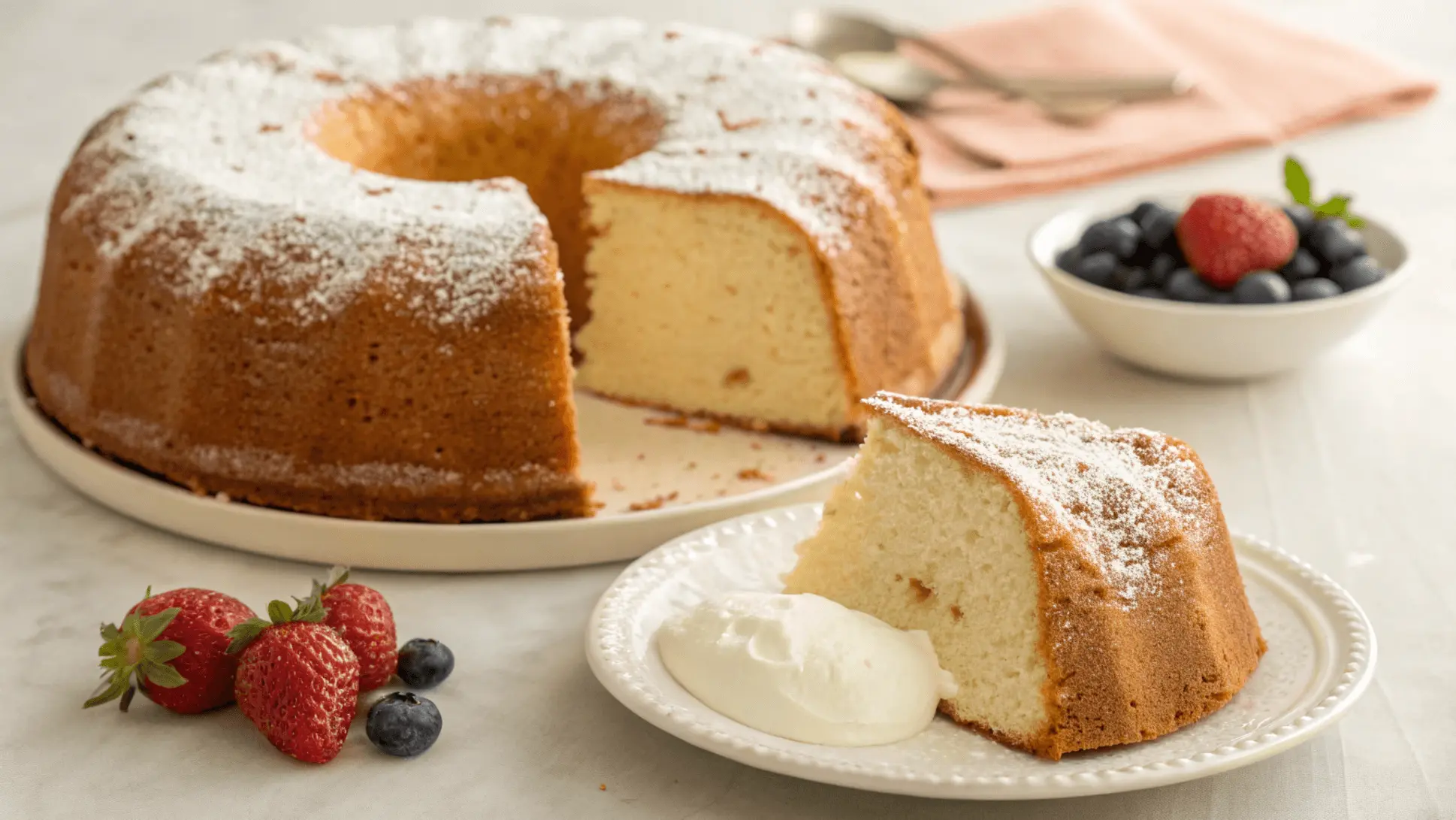
3 thoughts on “Whipping Cream Pound Cake – Moist, Rich and Easy Southern Classic”